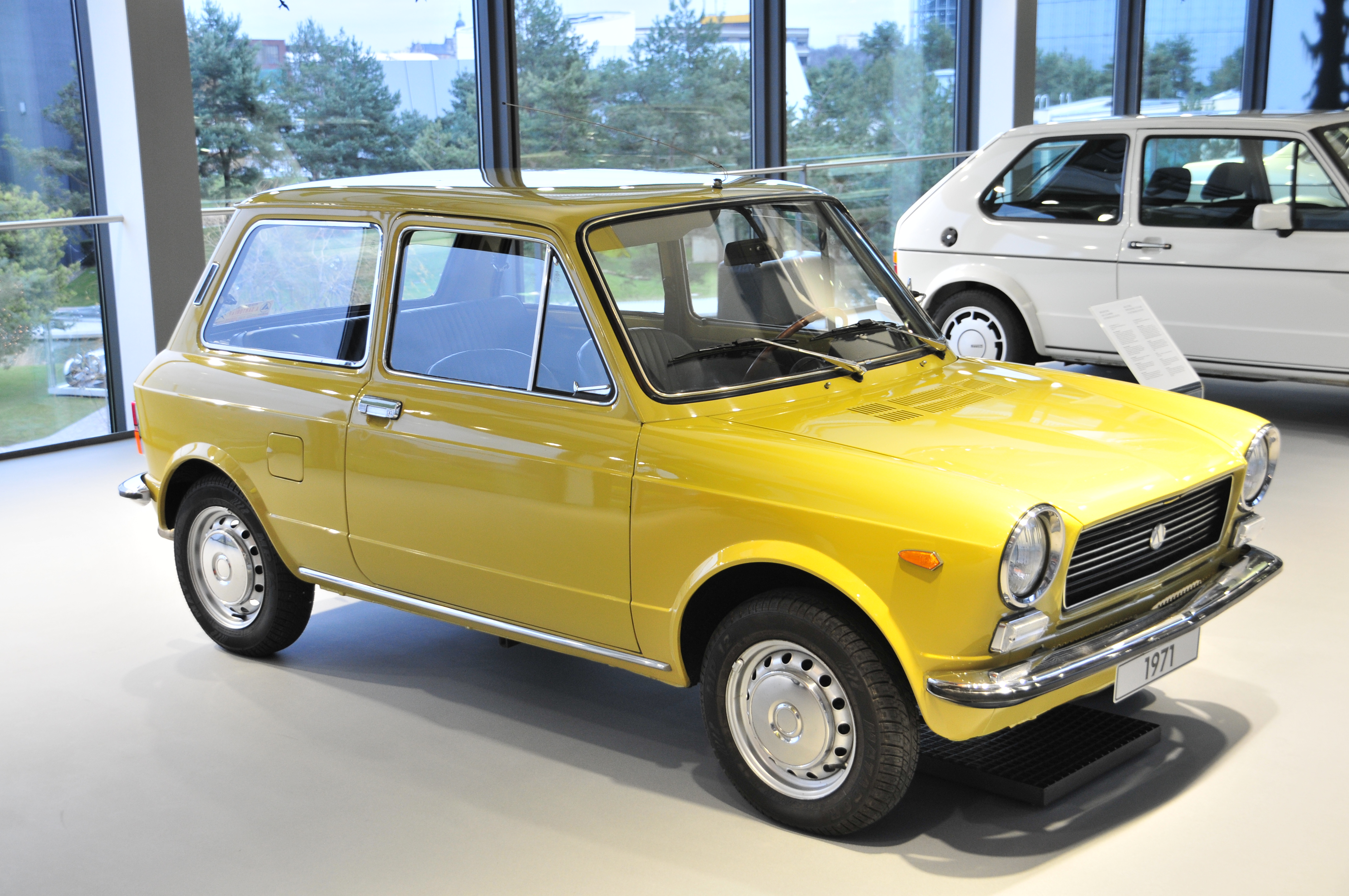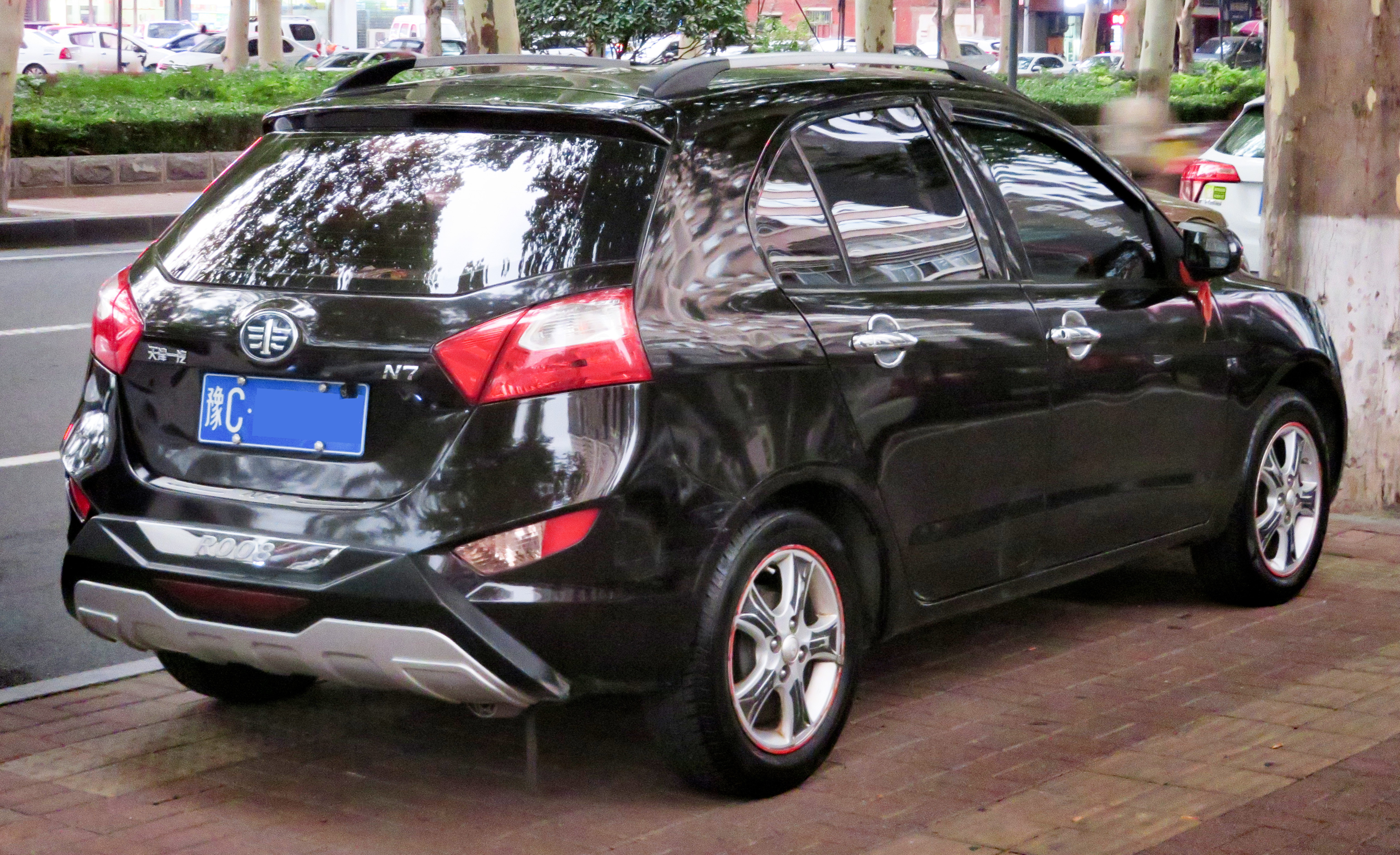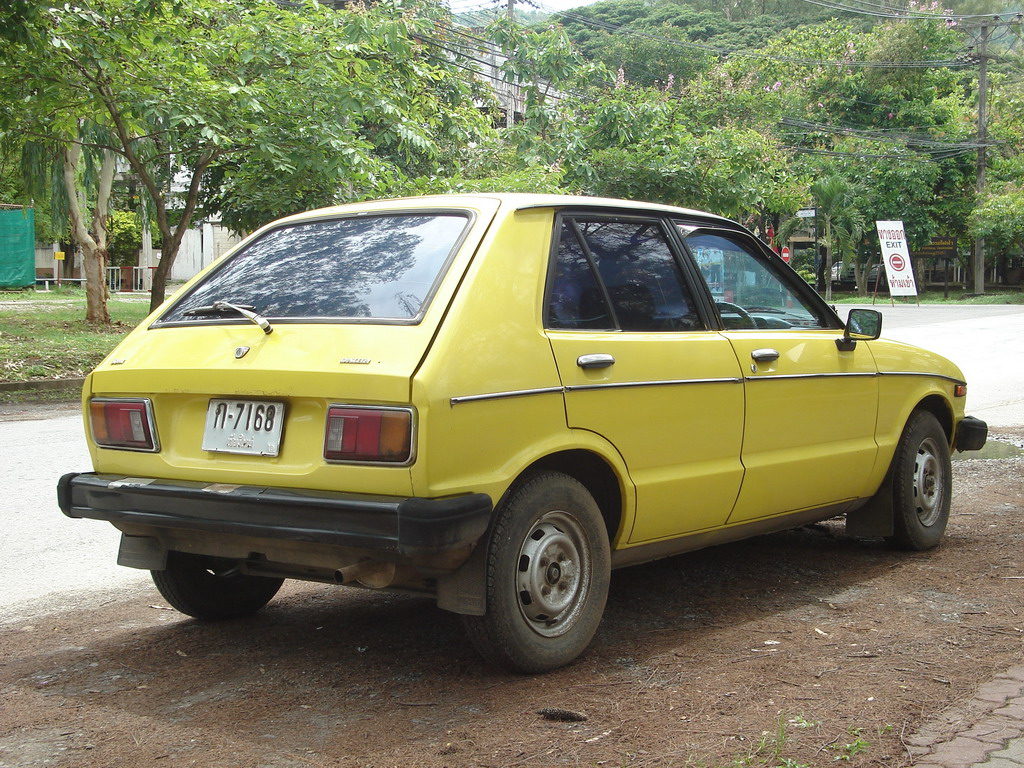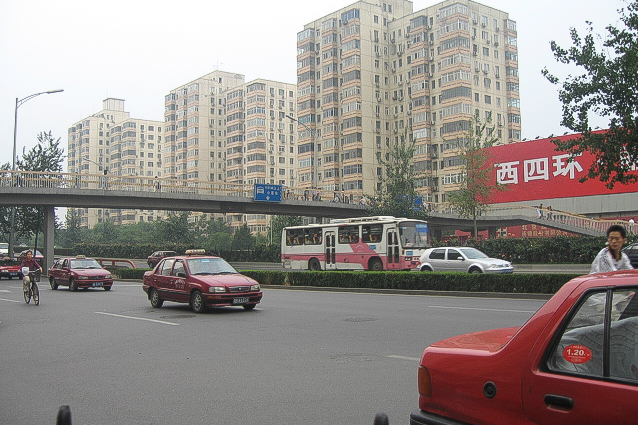|
Xiali N5
The Xiali N5 is a subcompact sedan produced by the Chinese automotive manufacturer FAW Group under the Xiali brand. Overview The N5 was released in 2009 and ranks in the class of supermini which was designed to replace both the Daihatsu Charade based Xiali N3 and the Toyota Platz based Xiali Vela. The hatchback sister model of the N5 was released a few years later. The Chinese N5 is only available as notchback versions, whereas the hatchback version is called Xiali N7. There was a facelift in 2013, where N5 received minor exterior updates and a brand new interior dashboard. The N5 was discontinued in 2017. Technical data The sedan is powered by a strong one-liter petrol engine A petrol engine (gasoline engine in American English) is an internal combustion engine designed to run on petrol (gasoline). Petrol engines can often be adapted to also run on fuels such as liquefied petroleum gas and ethanol blends (such as ' ... with three cylinders or a strong 1.3-liter g ... [...More Info...] [...Related Items...] OR: [Wikipedia] [Google] [Baidu] |
FAW Group
China FAW Group Corp., Ltd. (First Automobile Works) is a Chinese state-owned automobile manufacturer headquartered in Changchun, Jilin.FAW Today FAW's 50th Anniversary Brochure Founded in 1953, it is currently the second largest of the " Big Four" state-owned car manufacturers of China, together with , and |
Supermini
The B-segment is the second smallest of the European segments for passenger cars between the A-segment and C-segment, and commonly described as "small cars". The B-segment is the largest segment in Europe by volume, accounting for 20 percent of total car sales in 2020 according to JATO Dynamics. Definition The European segments are not based on size or weight criteria. In practice, B-segment cars have been described as having a length of approximately from up to , and may vary depending on the body styles, markets, and era. In some cases, the same car may be differently positioned depending on the market. The Euro NCAP vehicle class called "Supermini" also includes smaller A-segment cars alongside B-segment cars. In Britain, the term "supermini" is more widely used for B-segment hatchbacks. The term was developed in the 1970s as an informal categorisation, and by 1977 was used regularly by the British newspaper ''The Times''. By the mid-1980s, it had widespread use in Brita ... [...More Info...] [...Related Items...] OR: [Wikipedia] [Google] [Baidu] |
Front-wheel-drive Vehicles
Front-wheel drive (FWD) is a form of engine and transmission layout used in motor vehicles, where the engine drives the front wheels only. Most modern front-wheel drive vehicles feature a transverse engine, rather than the conventional longitudinal engine arrangement generally found in rear-wheel drive and four-wheel drive vehicles. Location of engine and transmission By far the most common layout for a front-wheel drive car is with the engine and transmission at the front of the car, mounted transversely. Other layouts of front-wheel drive that have been occasionally produced are a front-engine mounted longitudinally, a mid-engine layout and a rear-engine layout. History Prior to 1900 Experiments with front-wheel drive cars date to the early days of the automobile. The world's first self-propelled vehicle, Nicolas-Joseph Cugnot's 1769/1770 "fardier à vapeur", was a front-wheel driven three-wheeled steam-tractor. It then took at least a century, for the first e ... [...More Info...] [...Related Items...] OR: [Wikipedia] [Google] [Baidu] |
Cars Introduced In 2009
A car or automobile is a motor vehicle with wheels. Most definitions of ''cars'' say that they run primarily on roads, seat one to eight people, have four wheels, and mainly transport people instead of goods. The year 1886 is regarded as the birth year of the car, when German inventor Carl Benz patented his Benz Patent-Motorwagen. Cars became widely available during the 20th century. One of the first cars affordable by the masses was the 1908 Model T, an American car manufactured by the Ford Motor Company. Cars were rapidly adopted in the US, where they replaced animal-drawn carriages and carts. In Europe and other parts of the world, demand for automobiles did not increase until after World War II. The car is considered an essential part of the developed economy. Cars have controls for driving, parking, passenger comfort, and a variety of lights. Over the decades, additional features and controls have been added to vehicles, making them progressively more complex. These i ... [...More Info...] [...Related Items...] OR: [Wikipedia] [Google] [Baidu] |
FAW Group Vehicles (United States Navy)
{{Disambiguation ...
FAW or Faw can refer to: * Football Association of Wales, the third-oldest national association in the world * Fellowship of Australian Writers, an Australian lobbying group * FAW Group, a Chinese automotive manufacturing company * Al-Faw Peninsula, a marshy region adjoining the Persian Gulf * Al-Faw, a small port town in Iraq * Al-Faw Palace, a palace in Baghdad * Fall armyworm, an American food pest, now spreading in Southern Africa * Fleet Air Wing, see Patrol Wing A Patrol Wing (PatWing) was a United States Navy aviation unit with the commander of a Patrol Wing known as the Commodore, the ComPatWing or COMPATWING. From 1 November 1942 to 30 June 1973 Patrol Wings were designated "Fleet Air Wings". On 26 Mar ... [...More Info...] [...Related Items...] OR: [Wikipedia] [Google] [Baidu] |
Petrol Engine
A petrol engine (gasoline engine in American English) is an internal combustion engine designed to run on petrol (gasoline). Petrol engines can often be adapted to also run on fuels such as liquefied petroleum gas and ethanol blends (such as ''E10'' and ''E85''). Most petrol engines use spark ignition, unlike diesel engines which typically use compression ignition. Another key difference to diesel engines is that petrol engines typically have a lower compression ratio. Design Thermodynamic cycle Most petrol engines use either the four-stroke Otto cycle or the two-stroke cycle. Petrol engines have also been produced using the Miller cycle and Atkinson cycle. Layout Most petrol-powered piston engines are straight engines or V engines. However, flat engines, W engines and other layouts are sometimes used. Wankel engines are classified by the number of rotors used. Compression ratio Cooling Petrol engines are either air-cooled or water-cooled. Ignition Petrol e ... [...More Info...] [...Related Items...] OR: [Wikipedia] [Google] [Baidu] |
Xiali N7
The Xiali N7 is a subcompact crossover SUV produced by the Chinese automotive manufacturer FAW Group under the Xiali brand. Overview The N7 reveal was presented at the Shanghai Auto Show 2011 as the FAW R008 concept vehicle. In March 2013, the N7 was launched exclusively for the Chinese market. The N7 is based on the same platform as the Xiali N5. It is in fact a hatchback variant of the N5 which is a sedan. Production of the N7 ended at the end of 2019. Specifications The five-seater is powered by a 1.3-liter gasoline engine with four cylinders, which is also used in the Xiali N5. The vehicle has a 5-speed manual transmission as standard, a 4-speed automatic transmission An automatic transmission (sometimes abbreviated to auto or AT) is a multi-speed transmission used in internal combustion engine-based motor vehicles that does not require any input from the driver to change forward gears under normal driving ... is available for an additional charge. References ... [...More Info...] [...Related Items...] OR: [Wikipedia] [Google] [Baidu] |
Toyota Platz
The is a subcompact car that was manufactured in Japan by Toyota from 1999 until 2005, when it was replaced by the Belta. Designated by Toyota as the ''XP10'' series, the Platz was also sold in export markets as either the Toyota Yaris or Toyota Echo. The "Yaris" and "Echo" names were also given to the export version of the related Japanese market Vitz hatchback, from which the Platz derives. In Japan, it was only available at the ''Toyopet Store'' dealerships. Etymology The name "Platz" is German for "space" (as defined by "the interior room is spacious"). Only straight-four engines were fitted to the Platz, which was sold in Japan as a four-door sedan only. A coupé version was also available in North America where the car was badged "Echo". History The Platz was introduced in 1999 as a sedan sold internationally, with a coupé version exclusive to North America following for the 2000 model year. The Platz is closely related to the Vitz hatchback with which it shares ... [...More Info...] [...Related Items...] OR: [Wikipedia] [Google] [Baidu] |
Daihatsu Charade
The Daihatsu Charade is a supermini car produced by the Japanese manufacturer Daihatsu from 1977 to 2000. It is considered by Daihatsu as a "large compact" or "supermini" car, to differentiate it from the smaller ''kei car'' compacts in its line-up, such as the Daihatsu Mira. In Japan, it offers buyers more interior space and a larger engine that allows for the car to also be used outside of urban areas. It replaced the Daihatsu Consorte, although the Charmant took over from the bigger-engined Consortes, and didn't share a platform with a Toyota product. In China, the Daihatsu Charade was called Xiali and was produced by Tianjin FAW, under the registered mark of "China FAW". From September 1986 to 2009, it sold over 1.5 million units in that country. It also provided the basis for countless unlicensed Chinese copies, often depending on fibreglass moldings taken from the second generation Charade. Production ended in 2012. First generation (G10, G20; 1977–1983) The fir ... [...More Info...] [...Related Items...] OR: [Wikipedia] [Google] [Baidu] |
Manual Transmission
A manual transmission (MT), also known as manual gearbox, standard transmission (in Canada, the United Kingdom, and the United States), or stick shift (in the United States), is a multi-speed motor vehicle transmission (mechanics), transmission system, where gear changes require the driver to manually select the gears by operating a gear stick and clutch (which is usually a foot pedal for cars or a hand lever for motorcycles). Early automobiles used ''sliding-mesh'' manual transmissions with up to three forward gear ratios. Since the 1950s, ''constant-mesh'' manual transmissions have become increasingly commonplace and the number of forward ratios has increased to 5-speed and 6-speed manual transmissions for current vehicles. The alternative to a manual transmission is an automatic transmission; common types of automatic transmissions are the Automatic transmission#Hydraulic automatic transmissions, hydraulic automatic transmission (AT), and the continuously variable transmissio ... [...More Info...] [...Related Items...] OR: [Wikipedia] [Google] [Baidu] |
Tianjin FAW
Tianjin FAW (officially Tianjin FAW Xiali Automobile Co., Ltd.) is an automobile company based in Tianjin, China and a subsidiary of FAW Group. Its principal activity is the design, development, manufacture and distribution of automobiles sold under the Xiali and Vita marques. It is listed on the Shenzhen Stock Exchange. Tianjin FAW was founded in 1965 and was originally considered one of the "three smalls" of the Chinese automotive industry, together with Guangzhou Honda and Beijing. Tianjin FAW moved into third place in the Chinese market in 1997. By 2000 they were in second place, in spite of the low quality of their products. Lee et al, p. 96 Production volumes were high due to the fact that many towns used Xiali cars as taxicabs. Many of the smaller towns in rural China had Xiali cars as taxicabs well into the second decade of the twenty-first century. Xiali parts were cheap and it was one of the cheapest cars to run in China. Due to their low running costs, Xiali cars in man ... [...More Info...] [...Related Items...] OR: [Wikipedia] [Google] [Baidu] |
Inline-four Engine
A straight-four engine (also called an inline-four) is a four-cylinder piston engine where cylinders are arranged in a line along a common crankshaft. The vast majority of automotive four-cylinder engines use a straight-four layout (with the exceptions of the flat-four engines produced by Subaru and Porsche) and the layout is also very common in motorcycles and other machinery. Therefore the term "four-cylinder engine" is usually synonymous with straight-four engines. When a straight-four engine is installed at an inclined angle (instead of with the cylinders oriented vertically), it is sometimes called a slant-four. Between 2005 and 2008, the proportion of new vehicles sold in the United States with four-cylinder engines rose from 30% to 47%. By the 2020 model year, the share for light-duty vehicles had risen to 59%. Design A four-stroke straight-four engine always has a cylinder on its power stroke, unlike engines with fewer cylinders where there is no power stroke occu ... [...More Info...] [...Related Items...] OR: [Wikipedia] [Google] [Baidu] |









